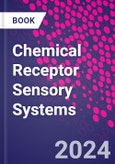This book provides a new resource that on all chemosenses topics within a unifying conceptual framework of the science of pharmacology. It will be useful to a variety of researchers and graduate students in pharmacology, biology and physiology of sensory systems, researchers in sensory psychology, research scientists in food & nutritional scientists, as well as clinical staff.
Table of Contents
PART 1 Foundational Concepts 1. Introduction: What Makes the Chemical Sensory Systems Different from Other Sensory Systems? 2. Historical Perspectives: Development of Conceptual Frameworks for Studying Taste and Olfaction 3. Principles of Receptor Pharmacology as They Relate to the Chemical Senses PART 2 Vertebrate Taste 4. Development of the Taste Receptor Concept 5. Classification of Tastant Receptors 6. Evolution of Taste 7. In Vitro Pharmacology of Tastant Receptors 8. The Taste Bud: The Sensory Organelle for Taste 9. Innervation of the Taste Bud 10. Taste Signal Coding Logic 11. In Vivo Measurement of Taste 12. Discriminability: The Link between Taste and Receptor Occupancy 13. Genetics of Taste 14. Taste and Pathology PART 3 Vertebrate Olfaction 15. What Distinguishes Olfaction from Taste? 16. Evolution of Olfaction 17. Discovery and Classification of Odorant Receptors 18. Pharmacologic Characterization of Odorant-Receptor Interactions 19. Pharmacokinetics of Mucosa Complicates Translation from Recombinant Cell-based Pharmacology to In Vivo Olfaction 20. Neurology of Mammalian Olfactory Systems 21. Processing of Olfactory Signals Implicit in Peripheral and Central Structure and Function 22. Olfactory Cues and Behavioral Responses 23. Genetics of Olfaction 24. Olfaction and Pathology PART 4 Special Topics in the Chemosenses 28. Pheromones and the Vomeronasal Organ 29. Insect Chemosensory Biology 30. Detection of Chemical Signals by Aquatic Organisms








